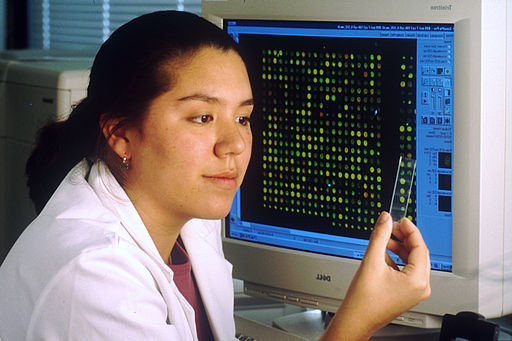More Gut-Wrenching Decisions About Abortion Due to Advanced Prenatal Testing
By Bonnie Rochman,
KQED
| 11. 06. 2017
Excerpts from “The Other Scarlet ‘A’: Abortion’s Relationship to Genetic Testing” from THE GENE MACHINE by Bonnie Rochman.
When the second purple line appeared on the white plastic wand on a March morning in 2002, I knew next to nothing about pregnancy and even less about raising a child. It was years before I’d go on to cover parenting and pediatrics, and write about sequencing children’s genomes. Yet from the first days of that pregnancy, I was already enmeshed in the most cutting-edge technologies of the time, thanks to my friend Tali, whose son was due a week after mine.
Tali had recently moved to my home state of North Carolina from Israel, where nuchal translucency testing was standard. I had no idea what it was, but I figured it was important, judging by her level of outrage that this test to gauge Down syndrome risk — combination of an ultrasound to measure the collection of fluid under the skin on the back of a fetus’s neck, and a blood draw — wasn’t commonly available in the United States. Within days, she told me...
Related Articles
By Josie Ensor, The Times | 12.09.2025
A fertility start-up that promises to screen embryos to give would-be parents their “best baby” has come under fire for a “misuse of science”.
Nucleus Genomics describes its mission as “IVF for genetic optimisation”, offering advanced embryo testing that allows...
By Katherine Long, Ben Foldy, and Lingling Wei, The Wall Street Journal | 12.13.2025
Inside a closed Los Angeles courtroom, something wasn’t right.
Clerks working for family court Judge Amy Pellman were reviewing routine surrogacy petitions when they spotted an unusual pattern: the same name, again and again.
A Chinese billionaire was seeking parental...
By Sarah A. Topol, The New York Times Magazine | 12.14.2025
The women in House 3 rarely had a chance to speak to the women in House 5, but when they did, the things they heard scared them. They didn’t actually know where House 5 was, only that it was huge...
By Tina Stevens, CounterPunch | 12.11.2025
Silicon Valley and other high tech billionaires are investing millions in start-ups dedicated to creating genetically engineered (GE) babies, according to a recent Wall Street Journal (WSJ) report. AI mogul Sam Altman, cryptocurrency entrepreneur Brian Armstrong, venture capitalist Peter...




